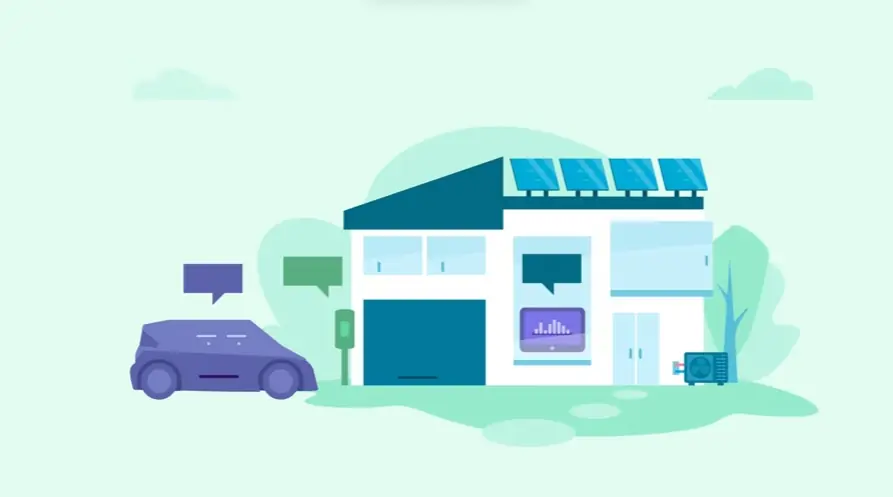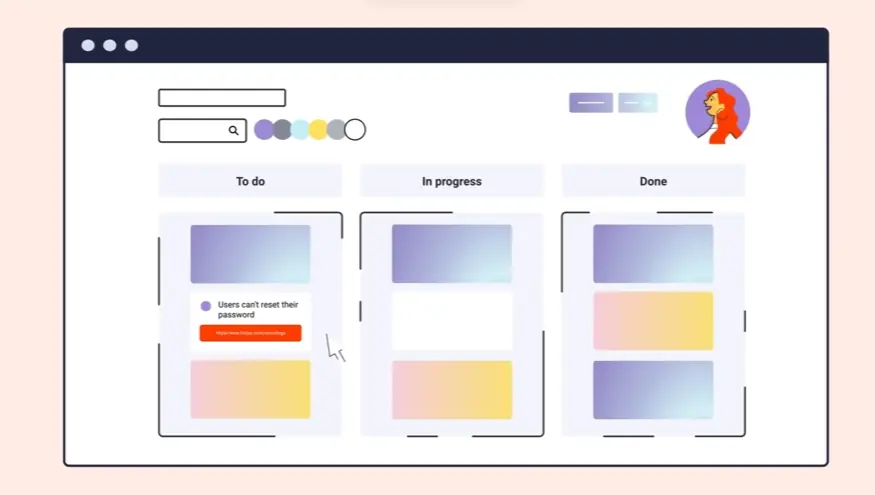
What visuals, audio, script, and pacing create a compelling software demo?
Compelling software demos blend clear interface visuals, concise audio explanations, benefit-focused scripts, and engaging pacing.
How can I visually demonstrate my software's unique problem-solving capabilities?
Demonstrate problem-solving by showcasing the software addressing real-world scenarios, using before-and-after visuals and on-screen text.
What demo video styles (overview, tutorial, problem/solution) best showcase my software?
Choose the demo style that best suits your goals: overviews for launches, tutorials for guidance, or problem/solution for targeted needs.
How can I visually highlight key software features and functionality in my demo?
Highlight key features using close-ups, annotated screen recordings, and animations that draw attention to functionality.
What narrative structures best showcase software capabilities in a demo video?
Effective narrative structures include problem/solution, feature/benefit, or a day-in-the-life to showcase software capabilities.
How do I tailor my software demo's visual style and messaging to my target audience?
Tailor demos to resonate with your target audience using language and visuals that address their specific needs and technical proficiency.
How can I seamlessly integrate customer success stories into my software demo?
Integrate customer success stories through testimonials, case studies, or brief interviews, demonstrating real-world impact.
What platform-specific optimization tactics should I use for my software demo video?
Optimize for each platform by adjusting video length, aspect ratio, and incorporating platform-specific calls to action.
When and how should I use animation effectively in my software demo?
Use animation to simplify complex concepts, highlight key features, and create visually engaging transitions.
How can I visually showcase a positive user experience in my software demo?
Showcase positive UX by demonstrating smooth interface navigation, intuitive interactions, and clear visual feedback.
What lead capture methods can I incorporate into my software demo video?
Incorporate lead capture methods like forms, landing page links, or QR codes within the video or description.
In which sales funnel stages is a software demo video most effective?
Software demos are effective across the sales funnel, from awareness to decision, depending on content and targeting.
How can I repurpose my long-form software demo into short social media clips?
Repurpose long-form demos into short social media clips highlighting key features, benefits, or success stories.
What are the best practices for CTAs in software demo videos?
Effective CTAs use clear language, visually appealing design, and strategic placement within the video.
How can I create a sense of urgency in my software demo to drive action?
Create urgency by highlighting limited-time offers, exclusive bonuses, or the potential drawbacks of not using the software. Typical turnaround times for video production range from 3-8 weeks, with pricing from $1000-$6000 depending on complexity and length.
Engaging Your Audience with Interactive Software Demos
Engaging potential customers with software demands more than just showing features it requires immersion inviting them into the experience itself. Moving beyond a standard Software Capabilities Demo Video that viewers passively watch interactive formats invite them to become active participants in the discovery process. These experiences whether a guided HTML walkthrough or a live simulated environment allowing limited free exploration put the control squarely in the user's hands allowing them to delve into functionality at their own pace. This personalized journey ensures they focus their valuable time on the specific aspects and features most relevant to their unique interests and business needs.
Interactive elements aren't mere visual flourishes they are functional tools designed to deepen comprehension and simulate real usage. Clickable hotspots on the interface embedded information points offering context and branching paths based on user choices effectively simulates the actual user experience. Viewers navigate the interface themselves see the software respond in real-time just as it would if they were a user and follow demonstration paths that directly address their specific workflows or pain points they aim to solve. This direct hands-on exploration is far more impactful than simply describing how the software works or showcasing pre-recorded clicks helping prospects truly envision themselves incorporating it into their daily tasks.
This approach fosters a deeper understanding of the software's value proposition and significantly accelerates the evaluation process. Interactive demos empower potential customers to research and evaluate independently providing a rich self-service experience available whenever they are ready day or night. They serve as powerful lead qualification tools by offering unparalleled insights analytics reveal exactly which features capture interest which paths users take and where they spend their time providing invaluable data for sales teams to tailor their follow-up.
Providing this hands-on experience often helps shorten sales cycles and increase user adoption post-purchase reducing support needs.
Detailed analytics track user interaction within the demo offering unique insights into prospect behavior and feature engagement levels.
Interactive formats represent a distinct self-guided engagement method compared to linear video demonstrations.
Ultimately this personalized active exploration cultivates prospect confidence and understanding naturally driving higher conversion potential.
Putting the power of exploration directly into the prospect's hands transforms how they perceive understand and ultimately value your software.
Why Advids for Software Capabilities Demo Video?
At Advids, we create high-quality, original software capabilities demo video s designed to showcase your software's power and drive business growth. Our unique blend of creative storytelling, cutting-edge technology, and proven experience ensures your vision translates into a compelling and effective demonstration.
Unlocking the Potential of Your Software:
Customized Software Capabilities Demo Video Solutions: We tailor each project, whether it's an explainer video, character animation, or another format, to perfectly match your brand, style, and target audience.
Creative Storytelling Through Animation: Our skilled animators and storytellers craft captivating narratives that engage viewers and clearly demonstrate your software's value proposition.
Cutting-Edge Software Capabilities Demo Video Technology: We utilize industry-leading software and techniques to create visually stunning videos that leave a lasting impact, highlighting your software's key features and benefits.
Experience and Expertise You Can Rely On:
12+ Years of Proven Success: With over 3400 successful projects for diverse clients, we possess a deep understanding of what makes a Software Capabilities Demo Video truly effective. Out of these, over 320 have been specifically Software Capabilities Demo Videos.
Trusted by Industry Leaders: From startups to Fortune 500 companies, brands like Razorpay, Ola, Mercedes, the United Nations, Continental, and Mercer rely on our expertise to bring their stories to life.
Client Satisfaction Guaranteed: Our commitment to excellence is reflected in over 109 five-star Google reviews, showcasing our talent, creativity, and dedication to client satisfaction.
A Partnership Built on Collaboration and Communication:
Collaborative Process: We work closely with you from concept to completion, ensuring your vision is realized in the final animation and accurately represents your software's capabilities.
Strategic Communication: Open and clear communication is paramount. We prioritize understanding your needs, target audience, and brand identity to create impactful Software Capabilities Demo Videos that resonate with your viewers.
Ready to unlock the potential of Software Capabilities Demo Video for your business with the latest video design trends of 2024? Let Advids be your trusted partner in transforming your ideas into engaging and effective animated experiences.
Checkout some of the projects and work our team at Advids has been producing:
What is a Software Capabilities Demo Video?
A Software Capabilities demo video is a concise and engaging video that showcases the key features and benefits of a software product. It's designed to educate potential customers, generate interest, and ultimately drive conversions. These videos are often used as a marketing tool to introduce a new software product, highlight specific features, or demonstrate how the software can solve real-world problems.
Software Capabilities demo videos are used in a variety of ways, including on websites, social media, and in email marketing campaigns. They can also be used as a sales tool to help close deals. By providing a clear and concise overview of the software's capabilities, these videos can help potential customers understand the value proposition and make informed decisions.
What do top Software Capabilities Demo Videos have in common?
Craft compelling software demo videos that showcase your product's value and drive conversions .
Ideal Customer Profile - Tailor the demo to resonate with specific user needs and pain points. Focus on the specific problems your software solves for this audience segment.
- Software Features Overview - Prioritize features that address core user needs and showcase unique selling proposition s. Highlight what makes your software stand out from competitors.
- Problem-Solution Alignment - Visually demonstrate the transformation from problem to solution. Use before-and-after scenarios to illustrate the impact.
- core functionality Showcase - Focus on the most valuable features, highlighting their ease of use and efficiency. Show, don't just tell, how these features benefit users.
- compelling visuals - Use high-quality graphics, animations, and screen recordings to create a polished and professional look. Maintain a consistent visual style throughout.
- User Experience Flow - Guide viewers through a seamless and intuitive user journey. Show how easy it is to navigate and use the software.
- practical application examples - Use diverse and relatable examples to showcase the software's versatility. Demonstrate how the software can be used in different contexts.
- quantifiable results - Use charts, graphs, and other visuals to present data in a clear and concise manner. Highlight key metrics that demonstrate ROI.
- Clear Call to Action - Provide a clear and concise call to action that encourages viewers to take the next step. Make it easy for viewers to contact you or learn more.
- Client Success Stories - Feature testimonials from satisfied customers to build trust and credibility. Use quotes and visuals to make the stories more engaging.
What makes Software Capabilities Demo Video effective?
Employing a compelling narrative structure that keeps viewers engaged from beginning to end, effective software capabilities demo videos deeply understand the target audiences pain points and aspirations, presenting a concise, problem/solution-focused narrative that directly addresses viewer needs. They demonstrate the softwares value proposition by showcasing quantifiable results like increased efficiency or cost savings , using compelling data visualizations . A clear primary call to action supported by secondary options is crucial.
Effective videos simulate the user experience, showcasing the softwares intuitive navigation and ease of use through a clear, step-by-step process mirroring real-world scenarios. High-quality visuals, including screen recordings, animations, and real-user testimonials, enhance engagement . Videos tailored to specific user personas , addressing their unique needs and priorities, significantly increase engagement.
Interactive elements such as clickable hotspots highlighting key features, branching scenarios based on user choices, and brief, targeted quizzes to assess understanding foster active participation . strategically placing calls to action throughout the video is crucial for optimizing conversions. A/B testing of different calls to action, video lengths, and visual elements to optimize conversion rates is essential.
Maintaining a professional and polished aesthetic consistent with the softwares branding and overall visual identity is paramount. Maintain a brisk pace, focusing on key features and benefits. Avoid unnecessary details or lengthy explanations; prioritize clarity and conciseness.
How long should your Software Capabilities Demo Video be?
Optimize software demo video length for maximum impact by aligning video type, content, and target audience stage.
Pre-production Considerations for Determining Video Length:
- What's the core software feature?
- Who's the ideal user profile ?
- How many key features are shown?
- Is the UI simple or complex?
- Where will the video be hosted?
- What's the video's call to action?
- What's the marketing objective?
Software capabilities demo video length guide
| Software Capabilities Demo Types | Video Length | Use Case | Funnel |
|---|
| Animated Explainer | 60-90 seconds | Concisely showcases software functionality with engaging visuals and narration, ideal for complex features explained simply, using a playful style | Awareness/Consideration |
| Screen Recording | 45-60 seconds | Demonstrates a streamlined user workflow, highlighting key features and benefits, focusing on practical application, using a clean, professional style | Consideration/Conversion |
| Product Walkthrough | 1-2 minutes | Provides a comprehensive overview of the software's capabilities and interface, suitable for a detailed exploration of features, using a clear and structured approach | Consideration/Conversion |
| Feature Highlight | 30-45 seconds | Focuses on a specific, compelling feature, showcasing its value proposition and benefits, using a dynamic and impactful style | Consideration/Conversion |
| Tutorial | 1-2 minutes | Guides users through specific tasks or workflows, providing step-by-step instructions, using a practical and instructional style | Conversion/Retention |
How to create Software Capabilities Demo videos?
Craft compelling software demo videos that resonate with your target audience and drive conversions. A strategic approach to video production ensures your software's capabilities shine.
* Concept Development - Focus on a unique value proposition , differentiating your software from competitors. Highlight the "why" behind the software, not just the "what."- Scriptwriting - Emphasize a clear, concise narrative that mirrors the user journey. Use strong calls to action to drive engagement and conversions.
- Storyboarding - prioritize visual storytelling . Use visuals to showcase the software's ease of use and intuitive interface.
- Casting/Talent Selection - Choose a presenter who is relatable and knowledgeable. Their enthusiasm should be contagious.
- Software Prep - Ensure the software is bug-free and runs smoothly. A flawless demo builds trust and credibility.
- Filming/Screen Recording - Use high-quality equipment and lighting. Professional visuals are crucial for creating a polished and trustworthy image.
- Editing - Maintain a fast pace to keep viewers engaged. Use transitions and cuts to highlight key features .
- Motion Graphics - Use animations to explain complex features. Make the video visually appealing and easy to understand.
- Music/Sound Design - Use upbeat music to create a positive and energetic atmosphere. Sound effects should enhance the viewing experience.
- Final Review - Get feedback from multiple stakeholders. Ensure the video is clear, concise, and effectively communicates the software's value.
Targeting Your Audience in Software Demo Videos
Let's face it: creating software demo videos that truly resonate with your audience requires more than just showcasing features. It's about understanding your viewers and crafting a message that speaks directly to their needs. Think of your demo as a conversation, not a lecture.
Imagine a potential customer struggling with a specific problem. Your demo video isn't just about showing off your software; it's about showing them how your software solves *their* problem. This requires understanding your ideal customer profile and tailoring your message accordingly. For example, saas demo video examples often focus on streamlining workflows for specific industries.
- Understand your audience: Defining your ideal customer profile is crucial. Knowing their pain points, motivations, and preferred communication style allows you to create a demo that truly connects.
- Focus on benefits, not just features: Instead of simply listing features, highlight how those features translate into tangible benefits for the user. Think about the "why" behind each feature. High-quality product demo videos often showcase the value proposition clearly.
- Show, don't just tell: Use relatable examples and real-world scenarios to demonstrate how your software solves problems. Technology Demo Videos, especially, benefit from practical demonstrations.
- Keep it concise and engaging: Respect your audience's time by delivering a clear, focused message. Software demo video examples that are short and impactful tend to perform better.
By focusing on these key strategies, you can create software demo videos that not only showcase your product's capabilities but also resonate with your target audience and drive conversions.
The Importance of a Strong Call to Action in Software Demos
Let's talk about the final piece of the puzzle: the call to action. Your software demo video has captivated your audience, showcased your product's brilliance, and now it's time to seal the deal. A strong call to action is the bridge between a passive viewer and an active user. It's the guiding hand that leads them to the next step, turning interest into conversion.
Think of your call to action as the final note of a symphony, the crescendo that leaves a lasting impression. Without it, your video might be informative, even impressive, but ultimately ineffective. It's like a salesperson delivering a perfect pitch and then forgetting to ask for the order.
- Guide your audience: Don't leave viewers hanging. A clear call to action tells them exactly what to do next, whether it's downloading a trial, requesting a demo, or visiting your website. Effective application demo video examples always include a clear next step.
- Tailor to your goals: Your call to action should align with your specific marketing objectives. Are you aiming for lead generation? Then "Request a Demo" might be ideal. Driving sales? Perhaps "Get Started Today" is more effective. Software feature videos, especially, benefit from tailored calls to action.
- Create urgency: A sense of urgency can be a powerful motivator. Limited-time offers, exclusive bonuses, or early bird discounts can encourage immediate action.
- Test and refine: Don't be afraid to experiment with different calls to action. A/B testing can reveal what resonates best with your audience and maximizes conversion rates. Analyze the performance of your software capabilities video examples to see what works. platform demo videos can be particularly insightful for testing different approaches.
A compelling call to action isn't just a button or a link; it's the culmination of your entire video's message. It's the final push that transforms viewers into customers, turning a captivating demo into a tangible result.
The Importance of Brand Consistency in Software Demos
Beyond simply showcasing features, effective software demos embody your brand. Consistency builds trust, making your software more appealing. Imagine a potential customer watching your demo – a consistent brand experience reassures them they're in the right place.
Think of successful product demo video examples. What makes them stand out? Often, it's the seamless integration of brand elements that creates a memorable experience. This consistency isn't just about aesthetics; it's about reinforcing your brand's promise and building a lasting connection with your audience.
- Maintain a unified visual identity. Use your brand's logo, colors, and fonts consistently throughout your demo. This creates a cohesive visual experience that reinforces brand recognition. Software explainer videos, for example, can leverage visuals to communicate complex information while maintaining a strong brand presence.
- Align your messaging. Ensure your demo's narrative reflects your overall brand messaging. This creates a seamless experience for potential customers, reinforcing your brand's value proposition. Solution demo videos, in particular, benefit from this alignment, showcasing not only the software's capabilities but also the brand's commitment to solving user problems.
- Tailor your demo to your target audience. Address their specific needs and pain points, reflecting your brand's understanding of their challenges. Even short software feature video examples become more effective when tailored to a specific audience.
- Use a consistent tone of voice. Whether your brand is professional, friendly, or innovative, maintain that tone throughout your demo. This creates a cohesive brand personality that resonates with viewers.
By focusing on these key elements, you can create software demos that not only showcase your product but also strengthen your brand, ultimately driving conversions and building long-term customer loyalty.
Author & Editor Bio
A video producer with a passion for creating compelling video narratives, Jai Ghosh brings a wealth of experience to his role. His background in Digital Journalism and over 11 years of freelance media consulting inform his approach to video production. For the past 7 years, he has been a vital part of the Advids team, honing his expertise in video content planning, creation, and strategy.
His collaborative approach ensures that he works closely with clients, from startups to enterprises, to understand their communication goals and deliver impactful video solutions. He thrives on transforming ideas into engaging videos, whether it's a product demo, an educational explainer, or a brand story.
An avid reader of modern marketing literature, he keeps his knowledge current. Among his favorite reads from 2024 are "Balls Out Marketing" by Peter Roesler, "Give to Grow" by Mo Bunnell and "For the Culture" by Marcus Collins. His results-driven approach ensures that video content resonates with audiences and helps businesses flourish.




